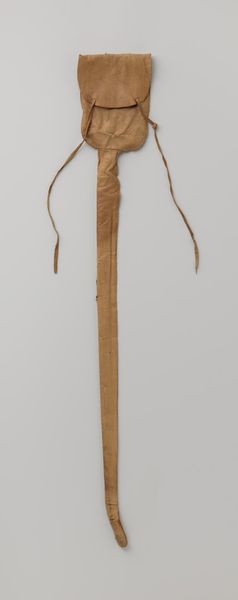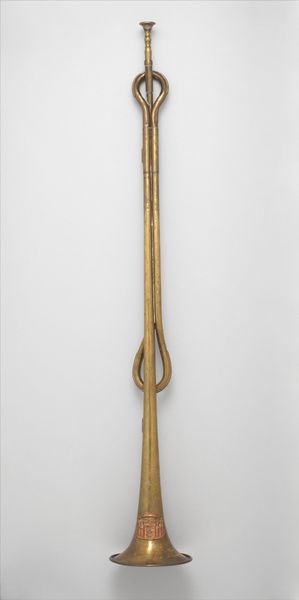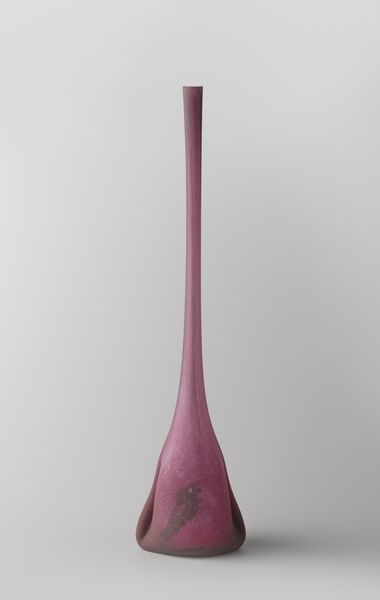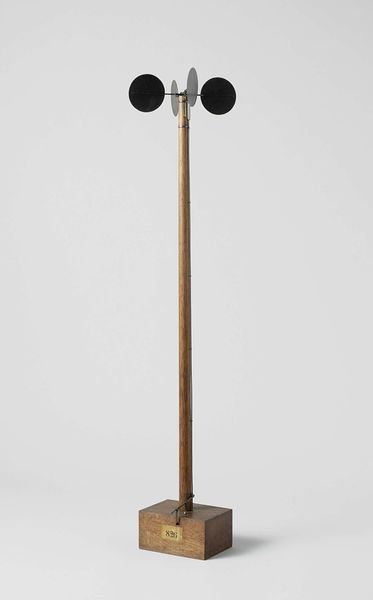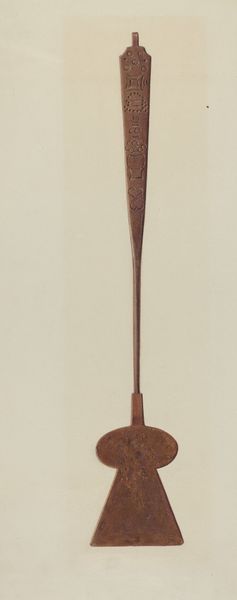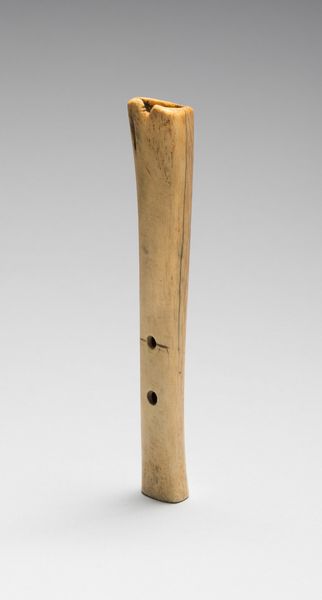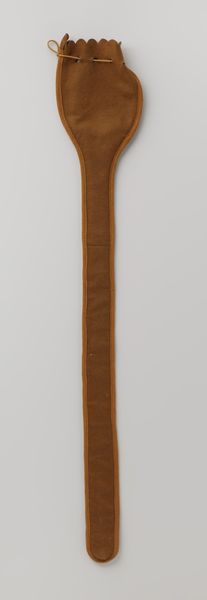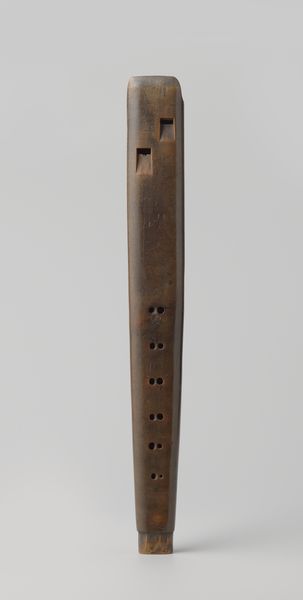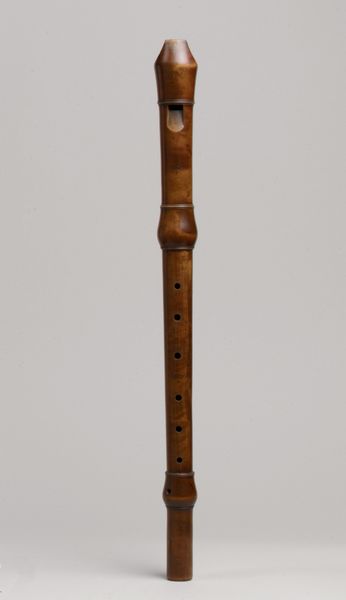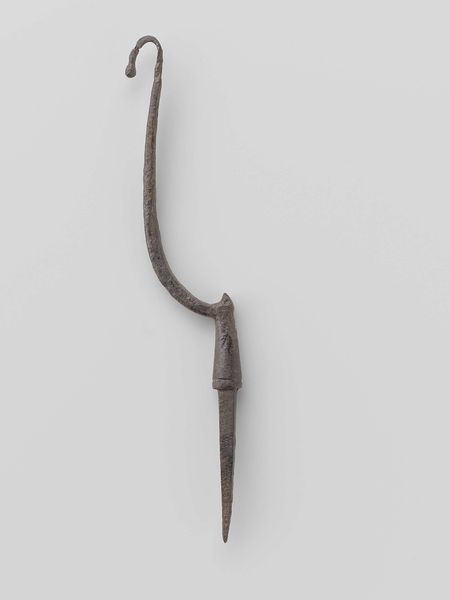
sculpture, wood
#
sculpture
#
wood
Dimensions: length 99 cm, width 17.5 cm
Copyright: Rijks Museum: Open Domain
Curator: Here we have a wooden sheath from around 1848-1858, crafted to hold the dress sword of politician C.P.M. Romme. Editor: It looks strangely gentle, doesn’t it? I mean, the color, the wood…not the menacing impression you'd expect from something associated with a sword, and especially not a politician of the period. It has a kind of simple elegance about it. Curator: Well, presentation was key in politics back then. Displaying accoutrements like a sword—and its sheath—was a mark of status, intended to project a certain image of power and sophistication. The craftsmanship would speak volumes about the owner. Editor: So it's less about pure utility, more about...conspicuous craft? The making of this object itself—the wood selection, the carving, even the method used to finish the piece, it would have been an exercise in demonstrating both access and taste. Were these crafted to order for politicians like Romme? Curator: More than likely. We have to remember the context: Romme was a very prominent figure, serving multiple terms as a representative. Someone of his stature would commission the finest materials and workmanship. It's not just a practical object but a political statement. Editor: Right, it says "I am powerful, discerning," etc. Thinking about it more in that light, though, shifts its appearance again. This material announces position but with the understanding that those who need to recognize it, will. Almost the opposite of what is "loud" now, materially. It makes me wonder what kind of access craftsmen and producers had to politicians like Romme and what pressures, materials, or time was imposed. Curator: A very good question. Such an object tells the history of its subject and, with this in mind, it would offer glimpses into the economic and social fabric of that era. How class, power, and manufacturing intersected. It offers a lot to ponder. Editor: Indeed. Viewing it as both sculpture and case—a humble but firm outer-shell of another equally political and aesthetic device is something else to think about as well. Curator: Yes, I agree. Hopefully, by understanding that history, we get a much richer reading of this unassuming piece.
Comments
No comments
Be the first to comment and join the conversation on the ultimate creative platform.
